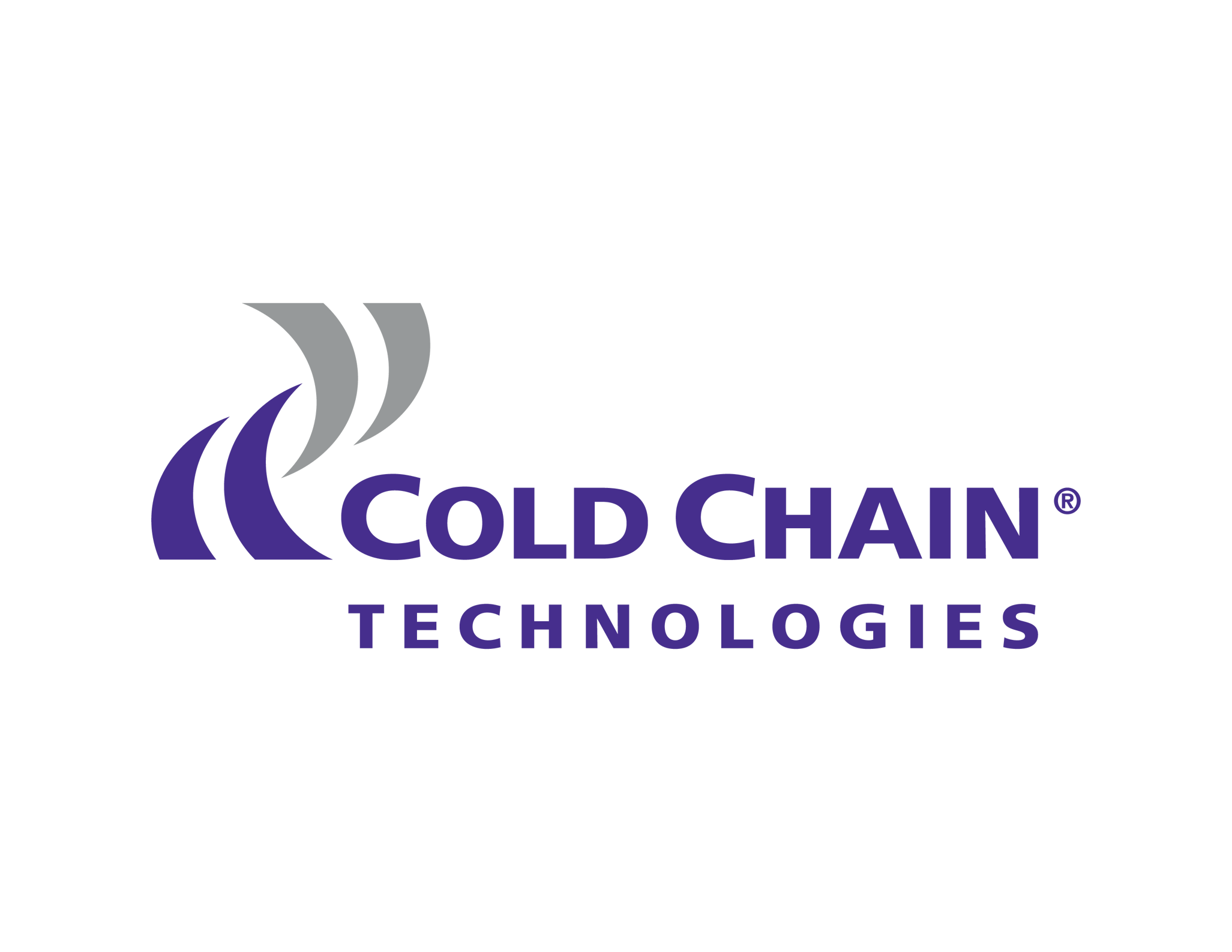Learn the essential role of data loggers in your cold chain monitoring process
A data logger is an in-transit temperature recorder that measures temperature during a specified time period. Data loggers are also called digital data loggers, data monitors, temperature data loggers, and in-transit temperature recorders.
Data loggers are an essential tool in your cold chain monitoring process. Modern data loggers can be programmed to give you real-time updates on the status of your cold supply chain, including alerting you when temperature ranges at the product level or in freezers, exceed acceptable limits.
It is not enough to use thermal packaging solutions to keep temperature-sensitive products safe and protected during transit, storage, and display. Data loggers give you the information you need to monitor, adjust, and make informed decisions about the strength of your entire cold chain management process.
What happens to your temperature-sensitive products when they leave your warehouse? How well is temperature, humidity, pressure, and air flow managed on shipping containers or in planes? Are your temperature-sensitive products being displayed and stored in conditions that comply with regulatory standards?
Knowing the answers to these questions and more is essential to cold chain monitoring and an informed cold chain management process. Keep reading to learn the facts on data loggers and why they are a core piece of cold supply chain technology.
What do Data Loggers Measure and Monitor?
Data loggers measure, monitor, and report on the cold supply chain environment. Modern data loggers measure and monitor:
- Temperature
- Humidity
- Air pressure, flow, and quality
- Light and light exposure
- Shock, impacts, and drops to products, parcels, containers, etc.
This data gives you a real-time window into what your temperature-sensitive products are exposed to and experiencing during every phase of the cold supply chain.
It’s important to note that you need to choose the right data logger for your products and the type of shipping, storage, and display environments you need to monitor and measure.
For example, one-time 90-day use data loggers are ideal for sea containers, long haul transport, and parcel shipments. And reusable data loggers that can record temperature data for up to one year are typically used for closed-loop monitoring applications, equipment validation, and qualification testing.
Applications for data loggers include:
- Cold supply chain management and monitoring
- Cold Room Temperature (CRT) monitoring
- Equipment testing and validation
- Weather monitoring and analysis
- Soil conditions including humidity for agriculture and farming
- HVAC system monitoring
- Historical artifact storage monitoring
- Data center monitoring
- Laboratory and scientific temperature measurement
What is the Cold Chain and Cold Chain Management?
Cold chain is an uninterrupted flow of a specific thermal profile throughout the manufacturing, packaging, and distribution of a temperature-sensitive product.
Cold chain management is the management of all phases of the cold chain, including products in transit, in process, in storage, and in display.
Temperature-sensitive products rely on cold chain management for product efficacy, product safety, and adherence to relevant regulatory requirements.
Products requiring cold chain solutions include pharmaceuticals, vaccines, biologics, lab samples, diagnostic materials, chemicals, food, and beverages.
Did you know? There are two categories of data loggers used for cold chain management and monitoring. Data storage loggers monitor temperatures in refrigerators, freezers, and other temperature-controlled environments to comply with global GDP requirements. Transportation data loggers monitor temperature and other environmental aspects in sea containers, transport trucks, parcels, reefers, and other long-haul shipping and distribution methods.
Data Loggers and Cold Chain Management
The cold chain management process relies heavily on technology to monitor and maintain the temperature, logistics, movement, delivery, and security of temperature-sensitive products and goods.
Data loggers play an integral role in maintaining the safety, quality, efficacy, and standards of temperature-sensitive products. Quite simply, without the data collected by data loggers, cold chain management and cold chain monitoring is a guessing game.
Using data loggers through-out the entire cold supply chain from manufacturing through to customer delivery, gives you the data, knowledge, and resources to make better decisions about how best to protect your temperature-sensitive products.
The data collected as your products move through the cold supply chain can be used to design better products, improve product packaging, and help lower total cost of ownership with changes to how products are shipped, warehoused, and distributed.
Data loggers enable successful cold chain management and monitoring:
Temperature tracking:
Immediate, real-time feedback about the temperature, humidity, and air quality are integral to ensuring the integrity, safety, efficacy, and quality of temperature-sensitive products.
This requires knowing the temperature during all phases of the cold supply chain including manufacturing, packaging, shipping, warehousing, customs, distribution, and display/storage.
For example, you want to know your vaccines are manufactured in a temperature-controlled environment and that upon delivery, they are stored in approved medical-grade refrigerators and freezers.
Real-time alerts, updates, and feedback
Modern digital data loggers use Bluetooth and IoT technology to give you the latest information on product environment and quality. Using a smart device app, you can configure temperature ranges, temperature excursion alerts, and more.
For example, the InTemp app allows you to easily view data, check logger status, set alarms, and create and share secure PDF reports for streamlined reporting and regulatory compliance.
Data, documentation, and quality monitoring
If there is a breach in your cold supply chain, you need to know every detail about the breach. The data collected and generated by data loggers is critical in knowing the what, when, where, why, how, and who of a cold supply chain breach.
Data loggers give you visibility into every aspect of your cold supply chain process. You know when a parcel has been left unattended on a pallet in a hot parking lot or what is happening inside a shipping container waiting for days at an over-crowded port.
Streamlined reporting and analysis
Your customers, 3PL partners, regulatory agencies, and your team need to know how and where your cold supply chain process can be improved. Data loggers can generate easy-to-read and understand reports that include an analysis of your cold supply chain.
For example, you can generate reports that include timestamps, location, temperature readings, excursions/alerts, and other environmental factors to help you make informed decisions about your cold chain management process and the safety of your temperature-sensitive products.
A data logger used for cold chain monitoring needs the following 9 features:
- Multiple sensors for measuring temperature, air quality, air pressure, humidity, and shock pressure.
- Bluetooth and IoT connectivity to provide real-time monitoring, alerts, and analysis.
- Customizable temperature sampling intervals based on the type of temperature-sensitive product.
- Advanced data processors and temperature sensors to ensure even the smallest variations in temperature are measured, recorded, and reported.
- Ability to create time-stamped reports and logs that include other variables such as location, temperature, humidity, etc.
- Customizable and built-in alarms for excursions, pressure changes, and drops/falls.
- Easy access to data without opening packages or manual processing.
- Secure, encrypted data sharing and storage with 24/7 remote access.
- Compliance with GDP regulations.
Data Loggers and Keeping Your Temperature-Sensitive Products Safe
Mitigating risk in the cold supply chain is essential to keeping your temperature-sensitive products safe. When the cold supply chain is breached, the costs and impacts run deep, including:
- Risks to public health due to ruined vaccines and medications.
- Corporate damage because of financial, litigation, brand, and product costs.
- Food insecurity issues caused by limited access to healthy fruits, vegetables, protein, and other food products.
Data loggers are just as important as your thermal packaging solutions, medical-grade refrigerators, insulated containers, PCMs, and other cold chain packaging materials and products.
You need to know your thermal packaging solutions and cold chain management processes are doing what they are designed to do – this is what a data logger does for you – it tells you what is and isn’t working.
A modern digital data logger gives you the insight and knowledge to help mitigate these risks to the cold supply chain:
Equipment failure and poor thermal packaging decisions are the biggest risks to your cold chain products. A cold chain best practices GAP analysis and the analysis from your data logger can help you mitigate these risks and protect you from loss.
Insufficient regulatory knowledge, compliance, and due diligence can create delays in document approval, customs clearance, and even prevent port entry. Take advantage of the PDF reports from your data logger to help streamline customs clearance and approvals.
Natural disasters, pandemics, and unexpected threats can cause a complete break-down in the cold supply chain and supply chain. It’s imperative you have a cold supply chain disaster management plan in place to mitigate short- and long-term impacts. Take advantage of the historical data from your data logger to understand what happens to your temperature-sensitive products during a disaster, power outage, or other threat.
Improper handling of goods, hardware and coolant failure, traffic slowdowns, clogged transport hubs, and other cold supply chain interruptions compromise the shipping, delivery, warehousing, and storage of your cold chain products. Your data logger tells you where the gaps are in your cold supply chain infrastructure.
Human error in the handling and care of your temperature-sensitive products is one of the largest risks in the cold supply chain. Data loggers alert you when a package is mishandled or when temperature excursions occur. But your first line of defense against human error is ensuring everyone involved in handling, moving, and delivering your products has up to date cold chain best practices training.
As part of this focus, it’s our goal to tell you what we know about cold chain, cold chain management, and cold chain technologies so you can make informed decisions and ask us the right questions about how and what we do for you.
Sign up for Cold Chain Tech blog updates to learn the latest in how to secure the cold chain, how technologies like data loggers help you manage your cold supply chain, and how the Cold Chain Tech team helps you maintain the integrity, safety, and quality of your temperature-sensitive products.


